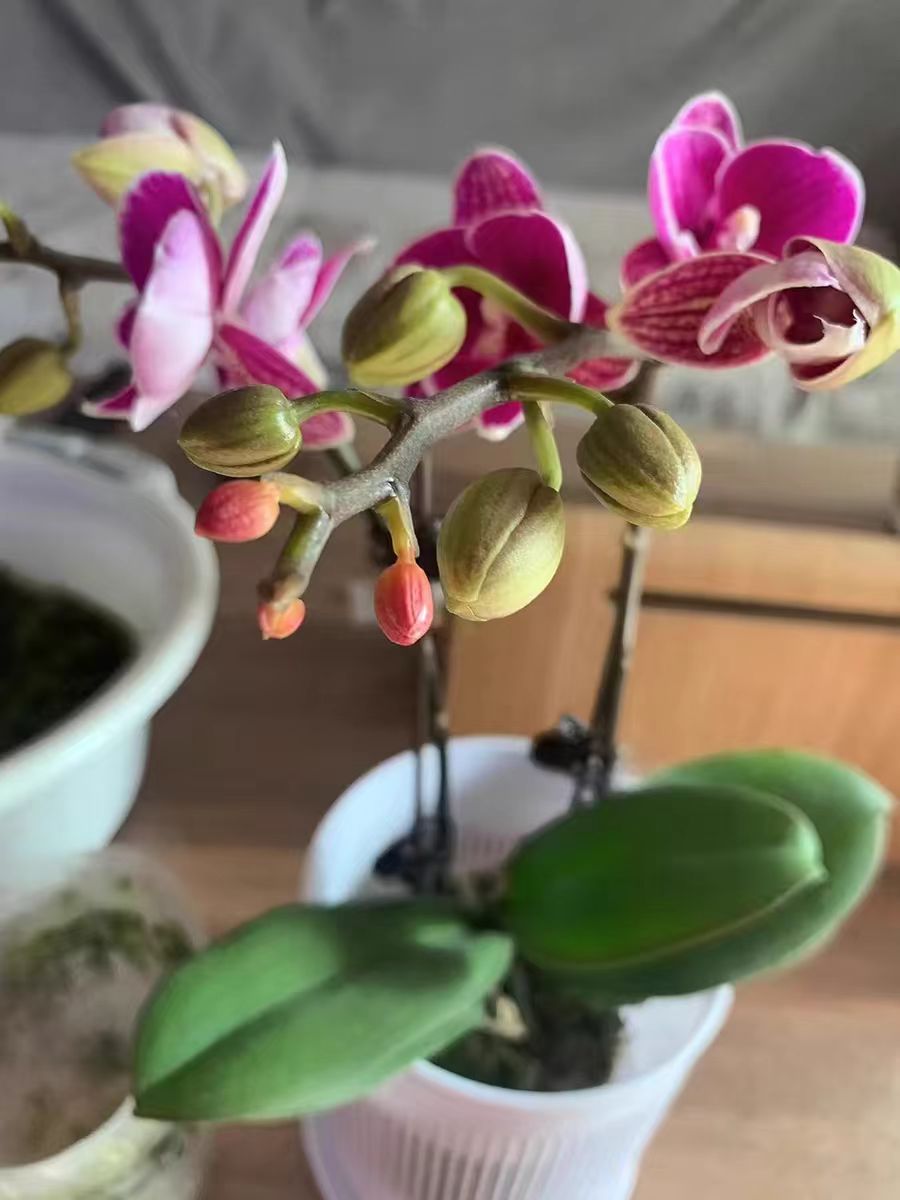Phalaenopsis is a tropical orchid native to warm regions. However, sometimes we encounter the problem of no new root growth in Phalaenopsis, which not only affects the plant's health but may also lead to weak subsequent growth, difficulty in blooming, gradual decline, and even death. Understanding the underlying causes and taking effective measures are key to saving the Phalaenopsis.
The primary cause of no new root growth in Phalaenopsis is an unsuitable root environment. As an epiphytic orchid, Phalaenopsis roots require extremely high air permeability. Using ordinary garden soil or substrates with poor air permeability can prevent the roots from breathing normally, thereby inhibiting new root germination. Improper watering frequency also has a significant impact: frequent watering can cause long-term water accumulation in the substrate, making roots prone to rot; insufficient watering can leave roots in a prolonged drought state, causing growth stagnation.
Inadequate nutrients can also make it difficult for Phalaenopsis to grow new roots. During the growing period, Phalaenopsis needs sufficient nitrogen, phosphorus, potassium, and trace elements. Long-term lack of fertilization or unbalanced fertilization ratios—especially a deficiency in phosphorus, which promotes root development—can slow down plant growth and prevent new roots from growing normally. Additionally, pest and disease infestations should not be ignored: root rot, nematodes, and other issues can directly damage root tissues, and in severe cases, cause roots to rot and die, naturally preventing new roots from emerging.
When discovering that Phalaenopsis is not growing new roots, targeted measures should be taken. First, improve the root growth environment. If the substrate has poor air permeability, promptly replace it with highly breathable materials such as sphagnum moss, bark, or ceramic pellets. Water according to the "see-dry-see-wet" principle: touch the substrate with your hand and water only when the surface is dry and white. Each watering should be thorough to ensure excess water drains out in a timely manner.
Scientific fertilization is an important means to promote new root growth. During the growing season, apply diluted water-soluble fertilizer 1–2 times a month. Choose fertilizers with higher phosphorus content, such as potassium dihydrogen phosphate, and dilute them according to the instructions for root irrigation or foliar spraying to provide adequate nutrients to the plant. Meanwhile, adding an appropriate amount of microbial inoculants can improve the microbial environment of the substrate and enhance root vitality.
For pest and disease control, take timely measures. If root rot occurs, remove the plant from the pot, trim off the rotten roots, soak them in a carbendazim solution for disinfection, and then replant them in new, clean substrate. For pest infestations like nematodes, use special insecticides for root irrigation and regularly observe the plant's recovery.
In addition, a suitable growth environment is crucial for new root growth in Phalaenopsis. Phalaenopsis prefers warm, humid, and well-ventilated environments, with an optimal growth temperature of 15–30°C. Excessive low or high temperatures can affect plant growth, so take winter warming and summer cooling measures. Maintain air humidity at 60%–80%, which can be increased by spraying water or placing water basins, but avoid prolonged water accumulation on leaves to prevent diseases.
The lack of new root growth in Phalaenopsis is the result of multiple factors. As long as we accurately identify the causes, adopt scientific and reasonable maintenance measures, improve the root growth environment, provide adequate nutrients, and do a good job in pest and disease control, we can help Phalaenopsis grow healthy new roots again.
English What should I do if my Phalaenopsis orchid is not growing new roots?

Share with
Tagged in :




Leave a Reply